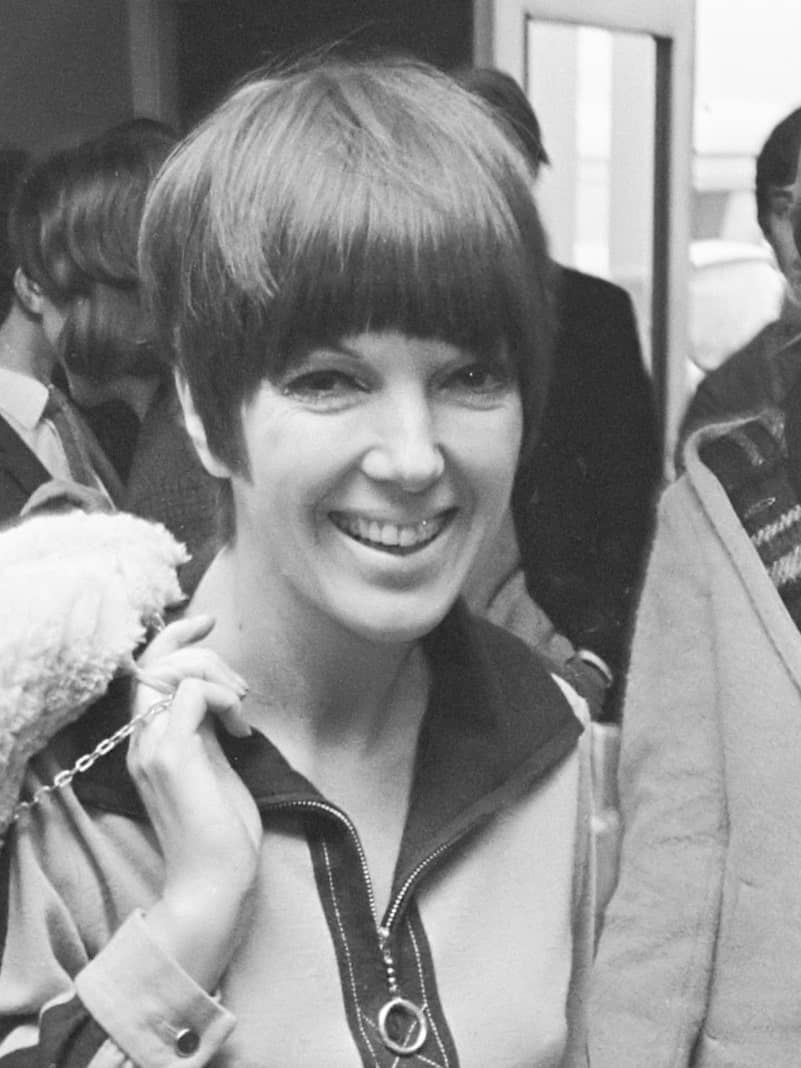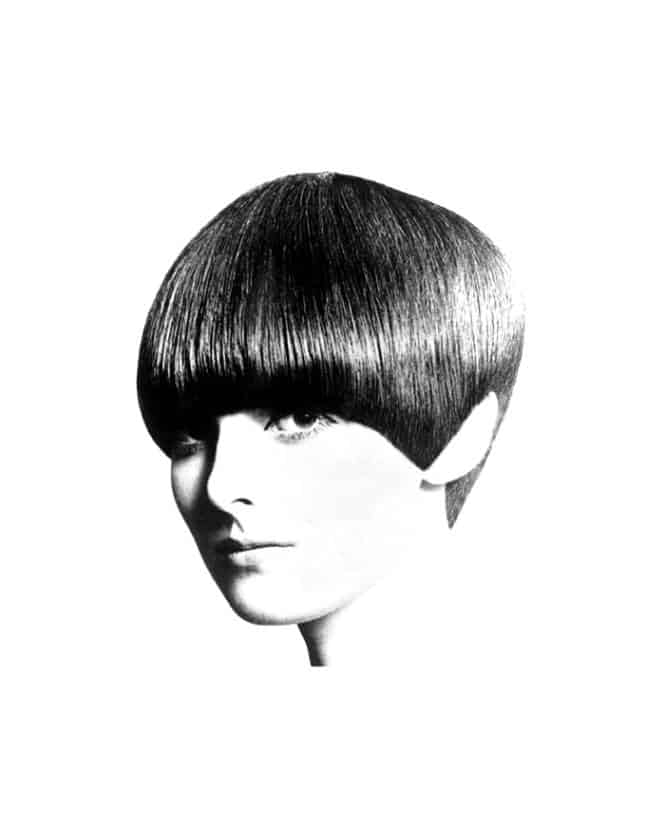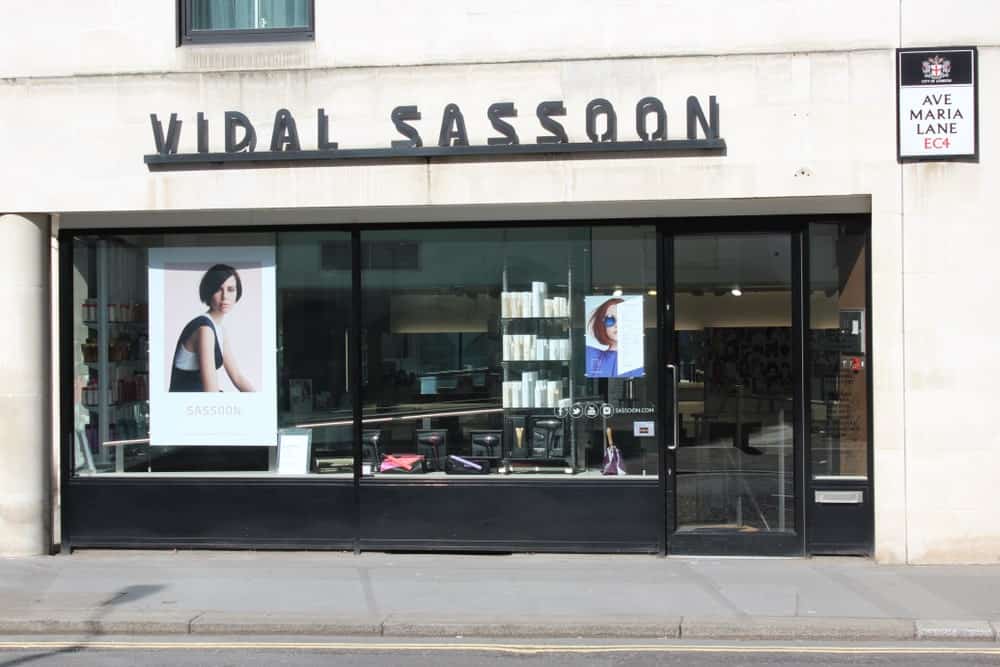Vidal Sassoon: 25 Interesting Facts You Didn’t Know
Anyone who has ever used a bottle of shampoo probably knows who Vidal Sassoon was. The famous stylist is renowned for reinventing the beauty industry and being a true auteur and hair pioneer. Sadly, he passed away in 2012 at the age of 84.
However, he left behind a legacy that will leave its footprints in the beauty industry for all time.
Take a look at some of the amazing things that you did not know about Vidal Sassoon.
1. Living at a Jewish Orphanage
Vidal Sassoon was born to a Jewish family in Shepherd’s Bush in London in 1928. Unfortunately, his parents split up during the Great Depression, and his father abandoned both him and his mother for another woman. Unable to cope with the financial responsibility of raising a 3-year-old Vidal and his younger brother, their mother, Betty, took them to their aunt to live. When their home also became too crowded, she was forced to send them to a Jewish orphanage. During the seven years they lived there, the two boys only saw their mother once every month. By the time Sassoon turned 11, his mother had remarried and could afford to look after them again. Soon after, she took both him and his brother out of the orphanage and they started living with her again.
2. His Mother’s Premonition
When he was 4 years old, Sassoon’s mother had a premonition that he would one day become a famous hairdresser. To that end, Betty dragged a reluctant Vidal to Adolf Cohen’s salon to ask about apprenticing her son to him. Cohen told her the fee he required and the amount was so huge that a dejected Betty was forced to leave the shop. Sassoon said he was relieved as he was more interested in playing football than becoming a hairdresser. However, as they left, Sassoon opened the door for his mother and politely tipped his hat to Cohen. The hairdresser was so impressed with young Sassoon’s manners, he called the two back inside and told them he would waive the apprentice fee entirely and took Sassoon under his wing.
The shop was in a working-class place and Sassoon who wanted a bigger and better life for himself started taking elocution lessons to get rid of his cockney accent.
3. Joining the 43 Group
In 1946, when Sassoon was 18 years old, he joined the Jewish veteran militia organization, the 43 Group. The organization was active in disrupting fascist meetings held in East London after World War II. Even though at that time, Oswald Mosley — the British politician who became a leader of the British Union of Fascists — was under house arrest, his supporters still marched the streets.
Sassoon said that the two opposing parties often engaged in fistfights and that he would arrive at the salon with cuts and bruises on his hands and face, to the shock of his customers.
The 43 Group disbanded three years later; however, Sassoon’s fight against anti-Semitism continued.
4. Enrolling with the Israeli Defense Forces
In 1948, Sassoon traveled to Israel where he joined the Israeli Defense Force as a member of its elite Palmach group in the War of Independence. In his later years, the stylist stated that he joined the force because “I thought if we don’t fight for a piece of land and make it work, then the whole Holocaust thing was a terrible waste. But this way at least we got a country out of it.”
5. Under the Tutelage of Mr. Teasy-Weasy
Sassoon later said on record that he remained ambiguous when it came to hairdressing. He said he liked the ladies coming into the shop and the sense of belonging; however, after coming back from Israel, he mostly returned to his old profession to support his mother after his stepfather suffered from a heart attack.
Sassoon started training with the leading hairdresser of that time, Raymond Bessone, popularly known as Mr. Teasy-Weasy, who owned a salon at Mayfair. Sassoon credits Bessone on teaching him how to cut hair and went so far as to say he would never have achieved success without Bessone’s training and influence.
6. Having Terrible Temper Tantrums
Sassoon opened up his first salon in 1954 with a clear idea of what hair shouldn’t be like. As he struggled to develop his own personal style, he suffered from temper tantrums.
He liked his employees to always look very professional and used to send them home if their shoes were not properly shined. He would often rebuke clients with a slap of the comb if they touched their hair while he was in the middle of cutting it. He also did not have much patience with clients who insisted they wanted a cut a certain way rather than the style he insisted they needed.
In his movie, Sassoon reminisced once he got so angry that he threw his scissors up in the air and they got stuck on the ceiling. He would also storm out of the shop and refused to come back for days.
7. Ambition to be An Architect
Sassoon was caught live saying that he would have loved to be an architect. He said that if he had the opportunity for an education, he would have picked architecture as his chosen field, claiming it was only in the presence of an architect that he became totally fascinated. However, his mother insisted he became a hairdresser, and as it often happens in real life, his mother got her wish. His famous geometric style cuts were inspired by his interest in architecture.
8. Developed Hair for Work

Sassoon is known in the hairstyling industry for bringing architectural designs to hair in the 1950s and 1960s. During those days, hair was about how much height, curl or hairspray it had. To keep their hair immaculate, women had to visit the salon two to three times a week to have their hair set. Moreover, hats added even more challenges to the over-the-top styles.
Sassoon, however, developed hair for work that disdained the tradition of lacquered hair, eliminating the need for women to visit the salon several times a month or to wear hair curlers to bed.
His principle was all about minimalist, beautiful hair cutting.
“My idea was to cut a shape into the hair, to use it like fabric and take away everything that was superfluous,” he famously said of his work.
9. “Wash and Wear” Cuts
As more and more women started entering the workforce, their curled-and-prepped hairstyles became an impediment for them to assert their authority in the male-dominated world. For them, Sassoon came up with the “wash and wear” haircuts that eliminated the need for women to spend hours sitting under a hairdryer. Sassoon’s cuts were innovative, minimalistic and easy-maintenance, signifying women coming into power.
10. Creation of the Bob
Although Sassoon did not invent the idea of short hair for women, he did come up with a range of never-before-seen hairstyles. He is also widely acknowledged for creating the bob hairstyle, one of the key looks that marked the “wash and wear” hair revolution.
11. Mary Quant Cut
Sassoon famously worked with designer Mary Quant who was the personification of the 60’s fashion icon. Inspired by the Bauhaus architecture, Sassoon created the geometric five-point bob, which became the signature look of Quant.
The modern angular cut contrasted sharply with the curled, pinned and romantic look of the 1950s. Sassoon said that he loved to cut uneven shapes in hair as long as it suited the person’s bone structure.
12. The Kwan Cut
A huge breakthrough for Sassoon came in 1963 when he cut the hair of Hong Kong-born American actress Nancy Kwan into a sleek face-framing bob with sharp points. The style soon became known as the Kwan cut, the Kwan bob, or simply, the Kwan, and the hairstyle was featured in American and British Vogue as well as other fashion publications around the world.
13. Grace Coddington’s Five-Point Cut
Before Sassoon, hair was all about back-combing and making it look artificial. Grace Coddington was a model for Sassoon in the 1960s, who first wore the original version of the famous five-point cut; a sleek and snug bob with a pointed spike at each ear and a sharp W cut at the nape. After that style, Coddington was famously heard saying she felt liberated and could run her finger through her hair. All she needed to d was drip-dry her hair and shake it and it was done.
14. The Greek Goddess Perm
Sassoon is also credited for creating the “Greek Goddess” hairstyle, a short tousled perm that was inspired by the women of Harlem. The finished style looked like a short cap of breezy, beachy waves.
15. Mia Farrow’s Pixie Crop
As Sassoon started developing his styles, his cuts got only shorter until he generated a shockwave with his infamous pixie crop worn by Mia Farrow. While Farrow was filming “Rosemary’s Baby,” Roman Polanski paid Sassoon $5,000 to cut the actress’ hair for the movie and even invited the media to see it. The extremely short androgynous hairstyle was initially met with shock but later proved to be a great advertisement for Polanski’s film. Farrow’s pixie cut is perhaps the best-known hair transformation because it redefined how short women can go with their hair.
16. One of the First Celebrity Hair Dressers
Sassoon is also hailed as one of the very first celebrity hairdressers and his client list included the aforementioned Mia Farrow as well as the likes of Jane Fonda, Goldie Hawn, Helen Mirren, and Twiggy. He opened his first New York salon in 1965 and it went on to become a string of international salons. Not only did he become a stylist for celebrities, but he also became a celebrity himself after he started to regularly appear in Sassoon commercials in the 1980s alongside famous supermodels.
17. Becoming a Hollywood Sensation
During that time, it was extremely rare for hairdressers to become Hollywood sensations as they were not viewed as actual stylists. Sassoon’s ability to do that was a huge achievement. What’s more, he appealed to the masses as he was relatable in the sense that he came from a very humble background and worked his way up from a barber.
18. Trendsetter And Influence For Other Stylists
In the 1970s, Sassoon moved to Los Angeles to better cater to his clients. He is also credited with influencing and trailblazing the way for other celebrity hairdressers like John Frieda, Trevor Sorbie, Mike Karg, and Nicky Clarke.
19. Creating Hair Products
As his business grew, Sassoon spent more of his energy in developing his own brand. Although he refused to style teased beehives, he became one of the very first stylists to own a popular hair care product line under his name.
His products catered to both the masses and the high-end market with luxurious shampoos lined alongside affordable hair-care products. Because of this, his customers had more of a connection with Sassoon’s brand than any other celebrity hairstylist. One of his bestsellers in the ‘80s was the two-in-one Shampoo and Conditioner, “Wash And Go.” He also branched out with a range of styling tools so that women could get the Sassoon to look at home.
20. ‘Precision Cutting’ Hair Academies
Sassoon’s hair academies taught “precision cutting,” the practice of shaping a person’s hair according to their bone structure. His academies produced some of the most notable alumni in the hairdressing world, like Lee Stafford. People from all over the world came to train at Sassoon’s academy.
21. Troubled Family Life
Sassoon was married four times in his life, the last to designer Rhonda “Ronnie” Sassoon, a Procter & Gamble executive. He had three biological children and once adoptive son.
His eldest child Catya was a famous actress, singer, and model. She was a teenage rebel and lived a fast-paced glamour lifestyle, which led to her struggling against drug addiction. She died of an overdose when she was 33 years old.
Sassoon’s son, David, was adopted in 1975 and his father described him as a “mischievous” child with an “irresistible smile.” The boy soon started displaying behavioral issues and spent a lot of time in reform schools to no avail. He later became estranged from his father and Sassoon disinherited him in his will, leaving him with none of his $150 million estates.
22. Indulging in Architecture
Along with Ronnie, Sassoon bought a modernist Richard Neutra house on Mulholland Drive in 2004. With that, he helped in the renovation work and hence indulged in his lifelong passion for architecture.
23. Humanitarian Efforts
Sassoon supported a wide number of charities and causes, including the Boys & Girls Clubs of America and Performing Arts Council of the Music Center of Los Angeles. He also financed the establishment of the Vidal Sassoon International Center for the Study of Anti-Semitism and Related Bigotries at the Hebrew University of Jerusalem in 1983.
24. Books and Films
Sassoon wrote and published several books including, “Sorry I Kept You Waiting, Madam in 1968; “A Year of Beauty and Health in 1979” co-authored with his then-wife Beverly Adams in 1975; “Cutting Hair the Vidal Sassoon Way” in 1984 and “Vidal: The Autobiography” in 2010.
He also promoted the documentary-style movie of his life in the 2010 movie, “Vidal Sassoon: The Movie.”
25. Honors
In 2009, Sassoon was appointed Commander of the Order of the British Empire (CBE) by Queen Elizabeth II.
Sassoon is acknowledged by the public and the fashion world as the greatest person who changed the world with his modern take on hair. He is considered an iconic hairdresser all over the world.



0 Коментарии